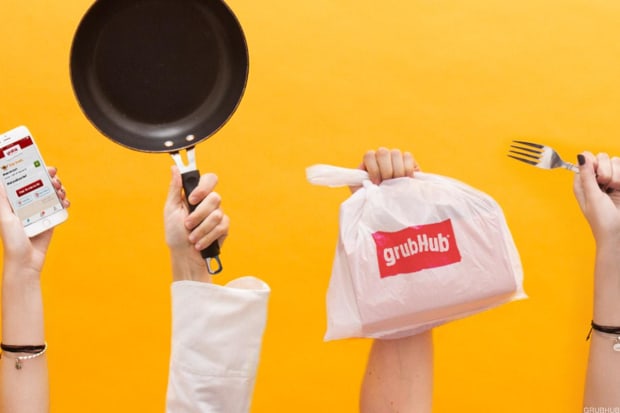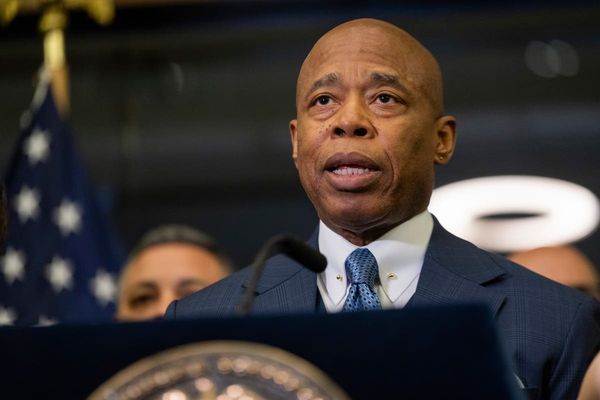Last year, the multinational food delivery business Just Eat Takeaway finalized its Grubhub (GRUB) purchase in an all-share deal a year and a half after Takeaway.com (founded in 2000 in The Netherlands) and Just Eat (founded in 2001 in Denmark) merged into one company.
The move was a bit of a surprise, as Uber Eats (UBER) was rumored to be interested in purchasing Grubhub before Just Eat beat it to the punch in 2020.
The Grubhub sale happened in June 2021, and by its third-quarter presentation there was already bad news. Its earnings before interest, taxes, depreciation, and amortization margins to shrank by 1% to 1.5%.
But Just Eat Takeaway has been struggling to turn a profit for a while, as according to the first-half 2021 earnings report, its revenue rose 52% year-over-year to approximately $3 billion. But its overall adjusted EBITDA fell by 192% to a loss of approximately $220 million.
The company referred to the first half of 2021 as the peak of its absolute losses, with CEO Jitse Groen saying “our consumer base, restaurant selection and order frequency have strongly increased, which will lead to improved profitability going forward.”
The activist investor Cat Rock Capital Management, which owns a 6.5% stake in Just Eat, blamed Grubhub for the under performance and urged Just Eat to sell it, perhaps to Amazon. But instead, Just Eats held onto its investment, and its EBITDA is expected to be between “minus 1% and minus 1.5%” for the year, according to its fourth-quarter report.
In the full year of 2021, Just Eat Takeaway.com processed 1.1 billion orders, an increase of 33% from the year before, but the company noted in its report that “the full year order growth, excluding Grubhub, was more than 40% year-on-year, versus the targeted 45%, despite the dampening effect of restaurants reopening.”
Why Doesn’t Grubhub Make Money?

Like Netflix and Zoom, Grubhub was one of those companies that prospered when the world went to heck in 2020. While people were generally cooking more at home as restaurants were largely off limits, at least at first, few people cook every single night so take out orders surged.
Grubhub reported sales of $459 million in the second quarter of June, a 41% increase that surprised even the company. So if Grubhub was ever going to turn a profit, this would be the time, right?
The problem is that the profit margins are fairly brutal. Delivery apps like Grubhub charge restaurants a percentage of the order, which according to an internal site is usually 20% for marketing and a 10% delivery fee as well as a processing fee of 30 cents + 3.05%, though it’s been accused of asking eateries to pay percentages of up to 30% for better placement on the site.
From there, Grubhub has to hire delivery people, “it’s biggest expense,” notes The Wall Street Journal.
Grubhub’s isn’t the only delivery service to struggle with profitability, as none of the other delivery apps (including Seamless, which Grubhub bought in 2013) have turned a profit yet.
Grubhub, Doordash (which hasn’t released an earnings report for the fourth quarter of 2021 yet, but made $1.28 billion of revenue in the third quarter) and Uber Eats, whose EBITDA loss margin improved to 1.4% compared to 2.1%, all dominate the market, controlling 85% of the food delivery world, but are struggling with tight margins.
Grubhub Wants To Deliver As Much As Possible

Grubhub
Grubhub is in a margins game right now, so it’s best play, from the company’s perspective, is to get customers to order more items, which is why it’s been expanding into grocery stores and alcohol delivery, and “to bundle nonperishable goods with food” to drive up order tallies and drive down delivery costs.
So that explains why Grubhub has now introduced Grubhub Goods, a collaboration with 7-Eleven. Following a pilot program in Manhattan, customers in more than 3,000 Grubhub Goods locations can order groceries for delivery, including ice cream, milk, deodorant and beer, depending on the location.
But in addition to getting people to buy more stuff, part of the reasoning for the move is just to continue to get the customer base to associate Grubhub with convenient delivery, as the company reports that people who order convenience items on Grubhub then go onto place more orders from restaurants in the following month than those who do not order convenience items.
When Does Grubhub Expect To Be Profitable?

Grubhub co-founder and former CEO Matt Maloney left the company in December, and so far Groen has not given an indication as to when he believes the company will become profitable, and the company did not respond to questions from TheStreet about when it thinks it will turn the corner.
But the likely answer is…no time soon, as the company is currently in the process of delisting from Nasdaq (NASDQ) , which it says is part of a move to cut down on costs.
Groen asserted there are no plans to sell Grubhub, and that only the largest food delivery players in each market will, eventually, become profitable, he said in an interview with the Dutch television program "Business Class".
Rising interest rates, inflation and market volatility are on the horizon. You don’t want to miss out on this exclusive opportunity to unlock Action Alerts PLUS at our lowest price of the year.







